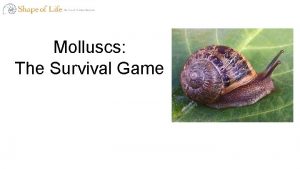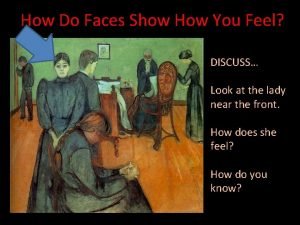These three types of rock were all crushed



- Slides: 3

These three types of rock were all crushed at Thwaite Watermill. Draw lines or colour code to match the rock types to their descriptions and uses. ROCKS DESCRIPTIONS USES • Making tools such as hand axes in prehistoric times. A very soft, white, sedimentary rock which is very porous (full of tiny holes). • Starting fires in prehistoric times, by hitting pieces together to create a spark. • Building, historically and today. Pieces are ‘knapped’ so the smooth, glassy inside is visible. • Making glaze, the shiny surface on some pottery (such as mugs and plates). A hard, tough, sedimentary rock. On the inside, or when broken into smaller pieces, it is very smooth and appears waxy or glassy. A type of granite (an igneous rock) which contains sparkling specks of mica and quartz. It can show many colours, including purple, red, brown, white and pink. • Making products such as paint, toothpaste and putty (for sealing window frames). • Writing on blackboards and pavements. • Absorbing sweat from gymnasts’ hands, giving them better grip. • Making soil less acidic to help certain plants grow better. • Making glaze, the shiny surface on some pottery (such as mugs and plates). • Building, to add more colour.

Answers ROCKS DESCRIPTIONS *These were the products made using rock crushed at Thwaite Watermill. USES • Making tools such as hand axes in prehistoric times. A very soft, white, sedimentary rock which is very porous (full of tiny holes). • Starting fires in prehistoric times, by hitting pieces together to create a spark. • Building, historically and today. Pieces are ‘knapped’ so the smooth, glassy inside is visible. • Making glaze, the shiny surface on some pottery (such as mugs and plates). A hard, tough, sedimentary rock. On the inside, or when broken into smaller pieces, it is very smooth and appears waxy or glassy. A type of granite (an igneous rock) which contains sparkling specks of mica and quartz. It can show many colours, including purple, red, brown, white and pink. • Making products such as paint, toothpaste and putty (for sealing window frames). • Writing on blackboards and pavements. • Absorbing sweat from gymnasts’ hands, giving them better grip. • Making soil less acidic to help certain plants grow better. • Making glaze, the shiny surface on some pottery (such as mugs and plates). • Building, to add more colour.

Image References Flint image – released under a ‘Creative Commons Attribution-Share Alike 3. 0 Unported’ license, taken by Otis Crandell and displayed on Wikipedia. Link to license: https: //creativecommons. org/licenses/by-sa/3. 0/legalcode China stone image – released under a ‘Creative Commons Attribution. Non. Commercial-Share. Alike 4. 0’ license and displayed on the Science Museum Group website. Link to license: https: //creativecommons. org/licenses/by-ncsa/4. 0/legalcode Chalk image – released under a ‘Creative Commons Attribution 2. 0 Generic’ license, taken by James St. John and displayed on Flickr. Link to license: ttps: //creativecommons. org/licenses/by/2. 0/legalcode





